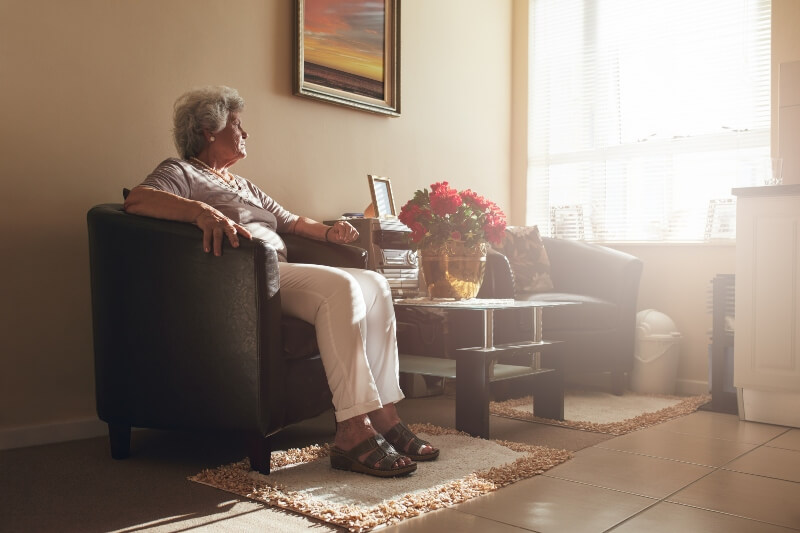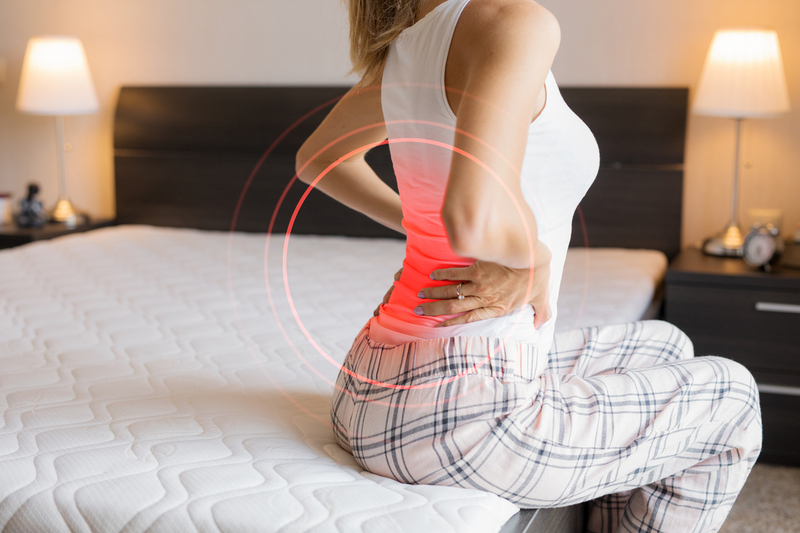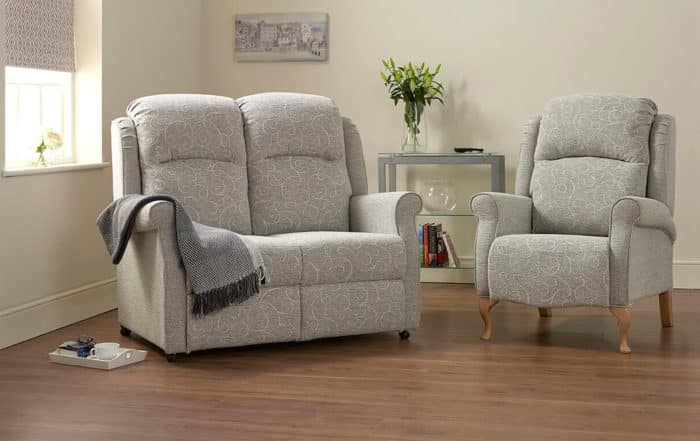How to Keep the Elderly from Sliding Out of Chairs
Social Links
Everyone likes a good sit-down. Putting our feet up at the end of the day, sitting around a table with our loved ones or snuggling up on a comfy sofa with a book and cup of tea is a real treat for many of us. But being able to get in and out of this sitting position or being able to wriggle and shift around if we become uncomfortable, is something that most of us tend to take for granted.
For the elderly, previously simple and easy manoeuvres may become more difficult and a little tiring. Some older people have the added stress of potential falls. This group knows that once seated in a chair, there can be a danger of sliding out if the chair is not supportive enough.
When do falls occur?
Being able to walk on two legs instead of four is very convenient, but the downside is our stability is severely compromised. Any of us could lose our balance at any time – including when we’re getting in and out of chairs. Getting in is slightly safer because unless you miss the chair entirely you at least have a soft landing. Getting out of a chair can be trickier because more momentum is needed; if there’s too much or too little, and nothing to hold on to, a fall is more likely to happen.
It’s also possible to fall off a chair while sitting in it. If the material is slippery and not at the right angle, for example, a user could simply slide out. Similarly, if there are inadequate or non-existent side supports, you could fall off the side – especially if you fall asleep. Even simple actions such as twisting, bending or reaching for something can tip someone over if they don’t have the necessary core strength to hold themselves in place.
Who is likely to fall?
As we age, it is natural to see a deterioration in strength, energy and balance, often due to reduced physical activity. This leads to complications including muscle stiffness, tight hamstrings and lack of flexibility in the knees and ankles. People with these issues will find it much harder to keep their balance when lowering or raising themselves from a chair. Existing impairments to the legs or arms, such as injuries or recent surgery, will also make balancing and gripping more difficult.
Many age-related conditions can also make falls more likely, particularly arthritis, osteoporosis and similar conditions that weaken the musculoskeletal system. Neurological conditions, such as Alzheimer’s, Parkinson’s and Huntingdon’s disease, can cause cognitive impairment, while some medications cause dizziness or drowsiness. All these factors can negatively impact our strength, coordination and balance.
The safest way to get out of a chair
Getting out of a chair is when a person is most likely to fall so it is important to do it properly – no shortcuts! Build your confidence by practising a few times a day and doing gentle exercises to build strength and flexibility. When standing up from a sitting position, follow these steps:
- Ensure you have adequate lighting; the floor is free from clutter and the surfaces are even.
- Slide your bottom all the way to the front of the chair, using the armrests to pull yourself forward.
- Bend your knees so your feet are as far back as they can go.
- Place your hands on the front of the armrests, or the front of the chair just outside your thighs.
- Lean forward from the hips with your back straight, and when you feel your body weight tip forward, push down with your arms and legs to stand up.
Choosing the best chair to avoid falling
The best way of preventing the elderly from falling out of a chair is firstly to have them sit in it correctly, and secondly, to have it made-to-measure for maximum support.The ideal chairs for the elderly shouldn’t be too big, too small, too hard, too soft, too wide, too shallow, too high or too low – in other words, a Goldilocks chair! Extra features and accessories include:
- Rise – the chair lifts and tips forward so the user can easily get to their feet. Many of these also come with an electric mechanism, so you don’t even have to reach down to pull a lever.
- 2-way tilt-in-space recline – reclining the back of the chair can increase the risk of sliding forward – but by tipping the seat back as well, the hips become slightly lower than the knees, increasing stability.
- Arm rests – these should be high enough to keep you in the chair, but not so high that you must lift your shoulders to use them. This means you’ll get maximum leverage when pushing yourself out of the chair.
- Wooden knuckles – for extra grip when getting in and out.
- Hinged armrests – the armrest swings out like a car door. This is a good option for high-care patients or those with impaired mobility, as it makes it much easier to transfer from the recliner to a wheelchair.
- Adjustable foot plate – for high-care users who may not have the strength to apply resistance to the floor. In this case, keeping them from falling off the chair is essential to avoid having to use a cradle lift to get them up again.
- Lateral supports – also known as butterflies, these provide extra support in both the upright and reclined positions and reduce the risk of falling from the side of the chair. These are a good option for anyone prone to falling asleep while sitting upright.
- Seatbelts – these are not recommended for permanent use as they can be uncomfortable and potentially lead to pressure sores – not to mention they’re a little undignified. However, they’re a good option for wheelchairs.
- Wings – as well as looking very stylish (especially on a leather or faux leather armchair) headrest wings will keep your head from falling onto your neck if you doze off in the upright position, minimising the risk of falling sideways from the chair, as well as neck and shoulder strain.
Falling asleep on a chair
There’s nothing wrong with falling asleep in your chair – whether intentionally or not – but it’s much better to catch your forty winks with the chair reclined. Choose the right back support for your needs, and fabric you find comfortable to sleep on. The more comfortable you are in the chair, the less likely you are to wriggle or move around in your sleep, and therefore the less likely you are to fall off. Armrests and wings will also help keep you in the chair when it’s fully reclined.
The bottom line
Although a fall from a chair is most likely to happen when you’re getting out of it, it’s still possible to fall while getting in, or even to slide out when you’re supposed to stay on it – especially as we know it’s common for elderly people to fall asleep while sitting. Fortunately, there are plenty of ways to prevent the elderly from falling from a chair, and it’s generally best to go for a combination of options.
Keep the area around the chair clear, lower and raise yourself carefully, and improve your muscle and core strength with simple daily exercises. And choose a chair that gives you support in both the reclined and upright positions, with features that best fit your own needs and lifestyle.
Of course, when it comes to style and colour, you’re only limited by your imagination! If you’re not sure where to start, contact the Mobility Furniture Company, and one of our experts will guide you through the whole process. And don’t forget that we can bring our rise and recline chairs to your home to show you how they work.
*This website contains general medical information. The medical information is not advice and should not be treated as such. Read our full Medical Disclaimer here.



